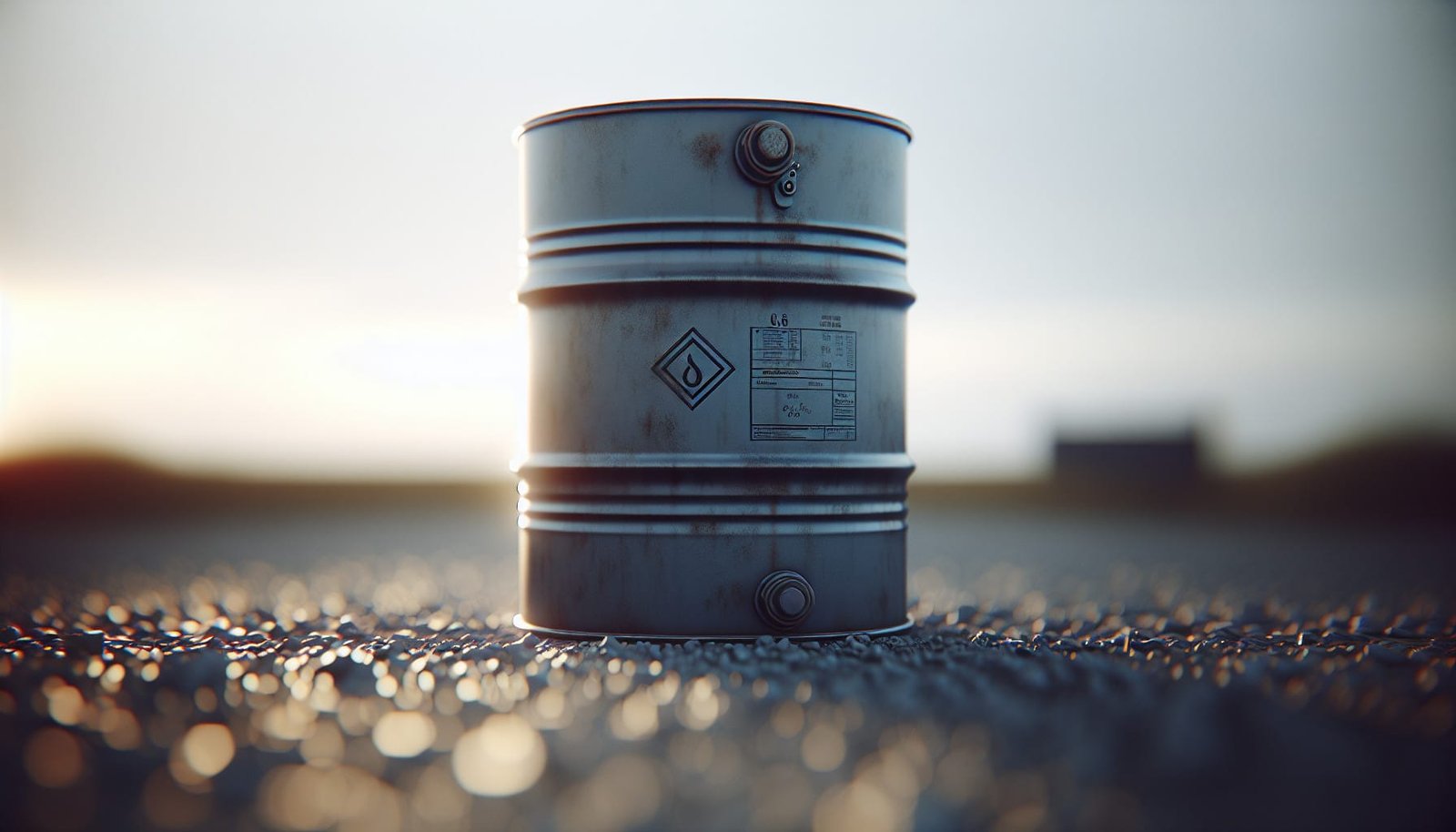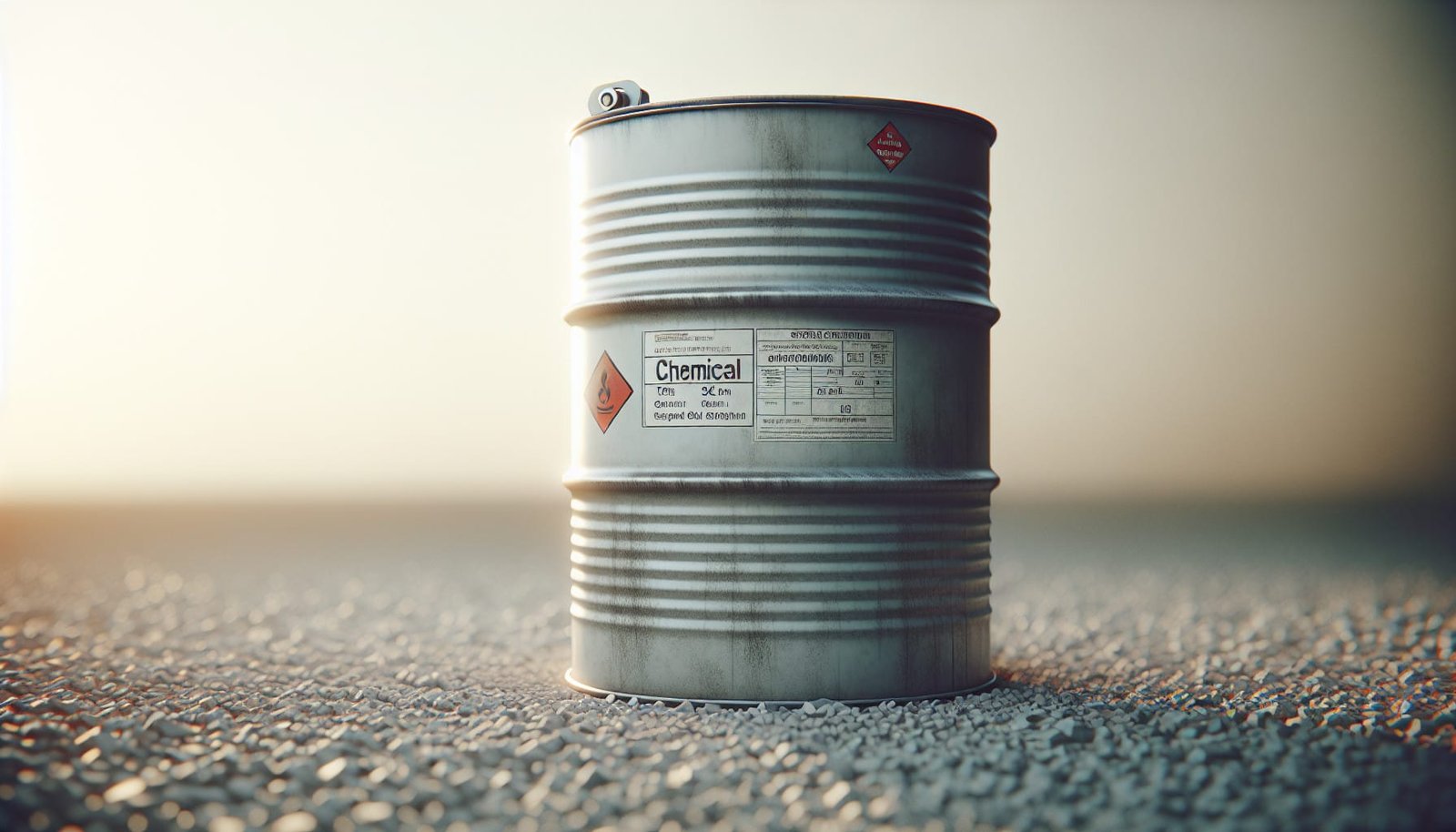?Are you storing chemicals near your well and want to keep your water safe for your family, livestock, and crops?
What Are Safe Practices For Storing Chemicals Near A Well?
You want practical, actionable guidance that reduces the risk of groundwater contamination and keeps your well secure. This section gives an overview of the most important actions you should take so your storage practices support both safety and compliance.
Why protecting your well matters
Your well is a direct link between surface activities and the water you drink, cook with, and give to animals. Contamination from fuels, pesticides, fertilizers, or cleaning solvents can make water unsafe almost immediately and may require costly remediation. Treating the area around your well as a protected zone reduces long-term health and financial risks.
Common chemicals you might store near a well
Farms and rural properties commonly store fuel, pesticides, herbicides, fertilizers, animal medicines, cleaning solvents, and lubricants. Each type of chemical has different behaviors in soil and water: some dissolve easily, others bind to soil, and some volatilize into air. Knowing what you store helps you plan safer storage and response measures.

Main contamination pathways to groundwater
Contaminants can reach groundwater through spills, leaks from tanks or containers, runoff during heavy rain, and improper disposal. Poorly sealed wellheads, shallow wells, or old wells with damaged casings are especially vulnerable. Understanding these pathways helps you prioritize physical protections and operational controls.
Know and follow local rules
Regulations and recommended distances for storing chemicals near wells vary by state, province, and municipality. You should check local environmental agencies, agricultural extension services, and building or zoning offices to confirm specific setbacks, secondary containment requirements, and permitting rules. Use local guidance as the baseline for everything you build or store.
Site selection and setbacks
Choosing where to store chemicals is one of the most effective things you can do to lower risk. Pick a site that’s upslope from the well, on stable ground, and at a safe distance. Avoid storing chemicals where runoff would flow toward your well or into drainage channels that enter groundwater recharge areas.
Recommended setback distances (general guidance)
| Chemical type | Recommended minimum setback from a domestic well (typical guideline) |
|---|---|
| Fuel and heating oil tanks (aboveground) | 100–200 ft (30–60 m) |
| Liquid pesticides and herbicides | 100–200 ft (30–60 m) |
| Fertilizer (bulk, especially liquid or salt-rich) | 100–200 ft (30–60 m) |
| Manure piles and lagoons | 200–500 ft (60–150 m) |
| Chemical mixing/loading areas | 150–250 ft (45–75 m) |
| Septic tanks and drainfields | 50–100 ft (15–30 m) |
These distances are general recommendations. Some jurisdictions set minimum setbacks that are larger or smaller. If you can, increase separation distances beyond the minimums, especially for large volumes or highly mobile chemicals.

Storage design and infrastructure
Good storage design reduces the chance that a spill, leak, or runoff will reach your well. You should think about containment, surface preparation, access control, and protection from weather.
Secondary containment
Secondary containment is essential. It captures leaks or spills so contaminants don’t reach soil or groundwater. A well-designed secondary containment system is impermeable and sized appropriately. As a practical rule, design containment to hold at least the volume of the largest container plus some freeboard—many best-practice guides recommend around 110% of the largest container’s volume. Use durable materials (concrete or synthetic liners) and inspect containment regularly.
Impervious pad and drainage control
Place containers on an impervious pad (concrete or polyethylene-lined) that is sloped away from the well. Drainage should divert rainwater and runoff away from the wellhead and storage area. Never let containment drain directly into the ground—if you need to remove accumulated rainwater, pump it into a safe container and treat or dispose of it per regulations.
Roof, shelter, and fire resistance
A roof or covered shelter reduces rain inflow into containment and limits degradation from UV and weather. For flammable liquids, you should use fire-resistant building materials and maintain safe distances from ignition sources. Vented shelters with locked access offer both safety and security.
Ventilation, grounding, and bonding
If you store flammable liquids or volatile solvents, provide adequate ventilation to prevent vapor build-up. When transferring fuel, ground and bond containers to prevent static sparks. Use approved pumps, hoses, and fittings designed for the product class.
Access control, security, and signage
Prevent unauthorized access—especially by children or curious livestock—by using lockable cabinets, fenced enclosures, or locked rooms. Post clear signage identifying hazards and emergency contacts. Maintain a single, well-controlled access point for deliveries and transfers to reduce the chance of accidental spills.
Chemical organization and inventory
A clear, organized approach reduces mistakes and makes inspections easier.
Labeling and documentation
Keep chemicals in their original, labeled containers whenever possible. Maintain an up-to-date inventory and keep Safety Data Sheets (SDS) for every product nearby and easily accessible. Your inventory should note product name, quantity, storage location, and expiration dates.
Segregation of incompatible chemicals
Store acids, alkalis, oxidizers, fuels, and pesticides separately to prevent dangerous reactions. Below is a simple reference to help you separate incompatible groups.
Incompatible storage groups (simplified)
| Group | Examples | Keep apart from |
|---|---|---|
| Oxidizers | Nitrates, chlorine products | Fuels, organic materials, reducing agents |
| Acids | Sulfuric acid, hydrochloric acid | Alkalis, cyanide-containing compounds |
| Alkalis (bases) | Lime slurry, sodium hydroxide | Acids |
| Fuels and solvents | Diesel, gasoline, kerosene, mineral spirits | Oxidizers, strong acids |
| Pesticides/herbicides | Various active ingredients | Food/feed storage, livestock areas if possible |
Label shelving and floor areas so you and anyone who works with chemicals can follow the segregation plan every time.
Handling, mixing, and dispensing best practices
The moments when chemicals are moved, mixed, or dispensed pose high risk. Control those activities carefully.
- Use designated mixing/loading pads with impermeable surfaces and containment trenches or sumps. Do not mix pesticides over bare soil.
- Use closed transfer systems or low-drift pumps to reduce splashes and spills.
- Always wear appropriate PPE: chemical-resistant gloves, goggles/face shields, aprons, and respiratory protection when required by the SDS.
- Keep spill kits and containment booms nearby during mixing operations.
Specific guidance for fuel transfers
- Turn off engines and sources of ignition during transfers.
- Use automatic shutoff valves and calm flow rates to avoid overfilling.
- Monitor fill levels and never top off tanks unnecessarily.

Spill prevention and response
Preventing spills is primary; having a plan and materials ready is second.
Spill prevention practices
- Inspect containers, tanks, and fittings regularly for corrosion, cracks, or leaks.
- Use drip trays when handling small containers.
- Train everyone who handles chemicals in safe transfer procedures.
- Keep incompatible materials separated in storage and during handling.
Spill kit contents (recommended)
| Item | Purpose |
|---|---|
| Adsorbent pads and socks | Contain and absorb liquid spills |
| Neutralizers (acid/alkali) | For neutralizing specific chemical spills where safe and appropriate |
| Granular absorbent | For larger liquid volumes |
| Shovels, brooms, dustpans | For cleanup and solid containment |
| Heavy-duty chemical-resistant gloves | Personal protection |
| Eye wash/portable shower | Immediate decontamination |
| Plastic bags and containers | For contaminated waste |
| Instructions and SDS copies | Guidance during response |
Emergency response steps (quick reference)
| Step | Action |
|---|---|
| Immediate safety | Remove people and animals from the area; avoid inhalation and contact |
| Stop source | If safe, stop the leak/close the valve or upright a tipped container |
| Contain | Use absorbents, booms, or temporary berms to keep the spill from spreading |
| Protect the well | Block runoff paths to the well; cover the wellhead if safe and practical |
| Notify | Contact local emergency services and environmental authorities if required |
| Clean up | Follow SDS guidance; collect contaminated materials for proper disposal |
| Test water | If spill could have reached groundwater, sample your well promptly |
Monitoring and testing your well
Regular water testing is one of the most important protections you can maintain. Baseline testing and periodic re-checks give you early warning and track trends over time.
What to test and how often
- Bacteria (total coliforms and E. coli): test at least annually, and anytime there’s a known spill, flood, or construction near the well.
- Nitrate and nitrite: test annually, especially if you use fertilizers or have livestock nearby.
- Pesticides or herbicides: test if you use these chemicals and suspect contamination or if you store large amounts nearby.
- Volatile organic compounds (VOCs): test if you store fuel or solvents near the well.
- Metals: test if you have industrial activities or suspect corrosion of well components.
Increase testing frequency after heavy rainfall events, large chemical handling activities, or any suspected release.
Interpreting results
If tests show contamination, stop using the well water for drinking and cooking until you have an alternative water supply and confirm safe levels. Contact your local health department or environmental protection agency for assistance. Remediation options depend on the contaminant and may include shock chlorination (for bacterial contamination), point-of-use filtration, or more extensive pump-and-treat remedies.
Managing livestock to avoid contamination
Livestock activities can be a major source of nutrients, pathogens, and organic matter that reach wells. You can reduce the risk through planning and management.
Keep livestock away from the wellhead
Fence off the immediate well area to keep animals from trampling the wellhead, contaminating the area with manure, or damaging protective seals. A simple fenced buffer of several feet helps maintain the integrity of the well cap and reduces direct contamination.
Watering points and trough placement
Locate livestock watering points downslope and at a safe distance from wells. If animals drink from a pond or stream used for recharge, locate that water source away from chemical storage and maintain good vegetative buffers. Use concrete or lined troughs and maintain drainage so runoff doesn’t head toward the well.
Manure management and storage
Store manure in contained, lined facilities away from wells. Manage composting so runoff and leachate are controlled and routed away from drinking water sources. If you use manure as fertilizer, follow nutrient management plans and avoid spreading it upslope of wells or during wet conditions.
Feed and medicine storage
Keep feed and veterinary medicines in sealed containers in a dry, secure area away from wells and storage areas for chemicals. Spills of medicinals or antibiotics can select for resistant bacteria and contaminate nearby soils and water.
Routine inspections and recordkeeping
Regular inspections help you catch problems early. Keep records of inspections, maintenance, deliveries, and any spills.
What to inspect and how often
- Visual inspection of container integrity: weekly to monthly.
- Secondary containment and pad condition: monthly and after heavy storms.
- Valves, fittings, and transfer equipment: before each use.
- Wellhead seal and cap: annually and after extreme weather.
- Inventory reconciliation: quarterly or whenever new products arrive.
Storage safety and well protection checklist
| Item | Frequency | Yes/No |
|---|---|---|
| Secondary containment intact and free of liquid | Monthly | |
| Storage area slope/grade directed away from well | Monthly | |
| Containers sealed, labeled, and undamaged | Weekly | |
| SDS for all products available and current | Quarterly | |
| Spill kit complete and accessible | Monthly | |
| Well cap sealed and area fenced/excluded from animals | Annually | |
| Records of deliveries and disposal kept | Ongoing |
Keep photos and a dated log for regulatory compliance and to help with insurance claims should an incident occur.
Disposal and recycling of chemical containers
Proper disposal prevents future contamination. Follow label instructions for triple rinsing pesticide containers and store rinsate in the original mixing tank or an approved holding tank for proper disposal. Recycle or dispose of empty containers at approved facilities—never burn or bury them. For large volumes, use licensed waste haulers.
What to do if you suspect contamination
If you think a spill or leak has reached your well, act quickly to protect people and animals.
Immediate actions
- Stop using the well water for drinking, cooking, or bathing. Use bottled water or an alternate source.
- Avoid activities that could push contamination further into the ground, such as high-volume pumping without expert guidance.
- Contact local health authorities and environmental regulators—your area may have specific emergency response procedures.
- Sample your well as soon as possible for bacteria, nitrates, and likely contaminants (VOCs, pesticides) based on your stored materials.
- Document the incident: what was stored, quantities, timing, and any photos of the spill and storage area.
Cleanup and remediation Cleanup may be possible on-site for small spills using absorbents and proper disposal. For suspected groundwater contamination, professionals may recommend pump-and-treat systems, in-situ treatments, or well replacement and sealing if the well structure is compromised. Work with licensed environmental contractors and regulators to define the proper approach.
Creating a well protection plan
A written plan guides actions and keeps everyone on the same page during routine work and emergencies.
Key elements of a well protection plan
- Inventory of chemicals and storage locations
- Mapping of well(s), flow directions, and topography
- Setbacks and site-specific engineering controls
- Inspection schedule and responsible person(s)
- Emergency contacts and spill response steps
- Testing schedule for well water and recordkeeping procedures
- Training requirements for workers and family members
Review and update the plan annually or after any change in storage practices, new construction, or an incident.
Working with professionals and resources
You don’t have to figure everything out on your own. Reach out to local extension services, licensed well contractors, environmental consultants, and regulators for tailored advice. They can help with site assessments, containment design, and regulatory permits.
Resources to consult
- State or provincial environmental protection agency
- Local health department
- Agricultural extension office for nutrient and manure plans
- Licensed well drillers and pump installers
- Certified pesticide applicator training and guidance
Common mistakes to avoid
Avoiding a few common errors will greatly reduce your risk:
- Storing liquids directly on bare soil or gravel without containment.
- Keeping incompatible chemicals together (e.g., oxidizers and fuels).
- Allowing livestock unrestricted access to the well area.
- Failing to maintain records, SDS, and inspection logs.
- Waiting to test your water until a problem is obvious—by then it may be too late for simple fixes.
Summary and key takeaways
- Keep chemicals as far from your well as practical and follow local setback rules.
- Use impermeable pads and well-designed secondary containment, sized to capture leaks and spills.
- Store chemicals in their original labeled containers, segregate incompatibles, and maintain SDS files.
- Fence and protect the wellhead from livestock and route runoff away from it.
- Inspect storage, update inventories, and test your well water regularly for bacteria, nitrates, and any chemicals you store nearby.
- Have a spill kit, written response plan, and local emergency contacts ready.
- Work with professionals for design, containment, and remediation when needed.
If you implement these practices, you’ll greatly reduce the chance that stored chemicals will contaminate your well and affect your family, animals, or crops. If you want, I can help you draft a customized well protection checklist or a sample written plan based on the types and volumes of chemicals you store.
